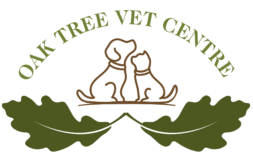Dental Care
Dental care: looking after your pet’s teeth
Why is dental care so important?
Dental disease is commonly seen in dogs, cats, rabbits and other species.
When your pets visit us we will routinely undergo a full clinical examination, which includes looking inside their mouths and at their teeth.
This is often when dental disease is discovered.
Pets often do not express pain in the way we expect them to and therefore dental disease often goes undetected at home and may be present for some time before it is discovered.
Some cats and dogs with dental pain may be quiet or irritable, rub or paw at their mouths, cease to groom themselves, avoid chewing hard foods or selectively eat on one side of their mouth.
Rabbits with dental disease may show signs including a decreased appetite, runny eyes, a wet chin or front legs, and a build-up of faeces around their tail.
You should always contact your vet for advice if you notice any changes that are not normal for your pet.
How do I find out if my pet has a dental problem?
If you have noticed any changes in your pet’s health or believe they are unwell, please book in for an appointment.
Annual vaccination appointments include a full health check and offer a great opportunity to have your pet’s mouth and teeth checked so that any signs of dental disease can be caught early.
If you have noticed any changes in your pet’s health or believe they are unwell, please book in for an appointment.
Annual vaccination appointments include a full health check and offer a great opportunity to have your pet’s mouth and teeth checked so that any signs of dental disease can be caught early.
What sort of dental problems can my pet get?
Below is a list of some of the common dental problems we encounter:
- Plaque is a bacteria-rich film which is tightly adherent to the teeth but can be removed by brushing. Plaque which is not removed, with time, will mineralise and become a hard discoloured material known as calculus, which can only be removed by scaling with a dental scaler.
- Gingivitis is inflammation of the gums, caused by infection or irritation. The source of the infection is typically plaque or calculus. Gingivitis can cause the gumline to become red, swollen or bleed easily.
- Gingivitis can lead to infection, known as periodontal disease. The further the infection tracks the more damage is done to the periodontal ligament. Deep pockets of infection form under the gum line and the tooth root attachment becomes weakened until eventually the tooth itself becomes loose.
- Tooth root abscesses can form as progression of periodontal disease, but also as a result of infections tracking down the inside of the tooth – for instance if the crown of the tooth has been damaged.
- Chipped, cracked or worn teeth are sadly not infrequent and can be caused by pets chewing on very hard objects.
- The dental disease we see in rabbits is different to that of cats and dogs. Overgrowth of both the front and back teeth is often seen and can be linked to factors such as a lack of dietary fibre.
In between check-ups, you can help to take care of your cat or dog’s oral health by brushing their teeth regularly with a pet safe toothpaste.
If you want to learn more about how to start brushing your pet’s teeth, are having problems brushing or want any more information on how best to care for your pet’s dental health, please do contact a member of our team.
Below is a list of some of the common dental problems we encounter:
- Plaque is a bacteria-rich film which is tightly adherent to the teeth but can be removed by brushing. Plaque which is not removed, with time, will mineralise and become a hard discoloured material known as calculus, which can only be removed by scaling with a dental scaler.
- Gingivitis is inflammation of the gums, caused by infection or irritation. The source of the infection is typically plaque or calculus. Gingivitis can cause the gumline to become red, swollen or bleed easily.
- Gingivitis can lead to infection, known as periodontal disease. The further the infection tracks the more damage is done to the periodontal ligament. Deep pockets of infection form under the gum line and the tooth root attachment becomes weakened until eventually the tooth itself becomes loose.
- Tooth root abscesses can form as progression of periodontal disease, but also as a result of infections tracking down the inside of the tooth – for instance if the crown of the tooth has been damaged.
- Chipped, cracked or worn teeth are sadly not infrequent and can be caused by pets chewing on very hard objects.
- The dental disease we see in rabbits is different to that of cats and dogs. Overgrowth of both the front and back teeth is often seen and can be linked to factors such as a lack of dietary fibre.
In between check-ups, you can help to take care of your cat or dog’s oral health by brushing their teeth regularly with a pet safe toothpaste.
If you want to learn more about how to start brushing your pet’s teeth, are having problems brushing or want any more information on how best to care for your pet’s dental health, please do contact a member of our team.
